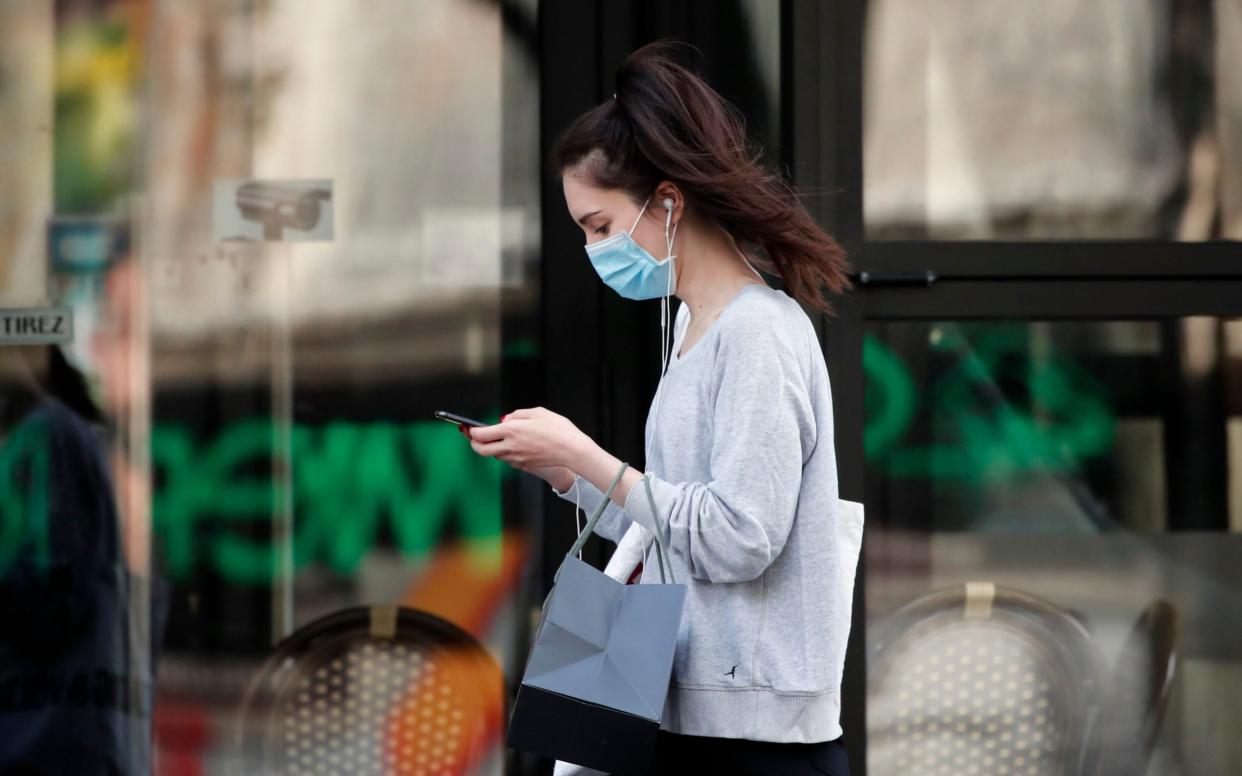UK's Coronavirus test and trace system explained

The end of a nationwide lockdown could be on the horizon, as the Health Secretary announced new plans to test and trace coronavirus cases.
The NHS Test and Trace service goes live on Thursday in England, with 25,000 contact tracing staff and the capacity to trace the 10,000 contacts per day.
Announcing the new service Matt Hancock said: “As we move to the next stage of our fight against coronavirus, we will be able to replace national lockdowns with individual isolation and, if necessary, local action where there are outbreaks.
"This new system will help us keep this virus under control while carefully and safely lifting the lockdown nationally."
The Government did not launch a contact tracing system until now because it needed to flatten the curve of infections first, Mr Hancock said, during Wednesday's Downing Street briefing.
He added that because the number of infections grew so large a national lockdown was needed to get the virus under control.
But now, because the number of new infections are down and testing capacity has increased, tracing contacts of infected persons is possible.
The NHSX contact tracing app, currently being trialled on the Isle of Wight, will also form part of the new Test and Trace strategy in the coming weeks.
But what is the new strategy and how will it work?
1. Self-isolate and test
From Thursday, anyone with symptoms including a persistent cough or temperature must self-isolate for at least seven days.
Anyone else in your household should self-isolate for 14 days from when you started having symptoms, as studies have shown people can be asymptomatic for up to two weeks.
Mr Hancock said it is "your civic duty" to isolate and follow the rules of the Test and Trace strategy.
“This will be voluntary at first because we trust everyone to do the right thing, but we will make it mandatory if that’s what it takes," Mr Hancock added.
“If we don’t collectively make this work, the only way forward is to keep the lockdown. The more people who follow the instructions, the safer we can be and the faster we can lift the lockdown.”
If you are experiencing symptoms you must request a test as soon as possible via nhs.uk/coronavirus or by calling 119. This will be available for residents in Wales from Saturday.
The capacity for testing will be scaled up, the Health Secretary said, after the launch of the online portal for key workers to order tests in April saw all 5,000 tests booked within two minutes.
Mr Hancock previously aimed for 100,000 tests to be carried out a day in the UK, but this capacity will be expanded to 200,000 per day.
The increase in testing capacity includes 50 drive through locations and 100 mobile testing units, the government announced.
Testing will also now be available for children under five, in a bid to help the reopening of schools in England from June 1.
If the test comes back negative, neither you, nor members of your household, need to continue self-isolating.
Boris Johnson acknowledged that being told to self-isolate was a "huge imposition" but people should be aware of why the Test and Trace programme was needed.
The Prime Minister also warned that if the initial voluntary system was not respected, fines could be introduced for people who fail to comply.
He told the Commons Liaison Committee on Wednesday: "We will be asking people to stay at home. If they don't follow that advice, what we will be saying is we will consider what sanctions may be necessary."
2. Contact trace
If you test positive for the virus you must complete the entire seven day period self-isolation period.
Members of your household must also complete a 14-day isolation period, from when you first showed symptoms.
Once you test positive you will receive a text or email alert from NHS Test and Trace within 24 hours.

This will provide instructions of how to share details of the people you have been in close, recent contact with. This includes your family or other people you live with, as well as people you have been in direct contact with, or within 2 metres of, for more than 15 minutes.
The information shared will also need to include places you have recently visited and will be handed over via a secure website. For those without internet access, they will be called by one of the 25,000 contact tracers.
The contact tracing team will use the information provided, along with online services and local public health experts, to identify individuals you have had close contact with and alert those most at risk of having the virus that they need to self-isolate.
In the coming weeks, the NHSX Covid-19 app will also be used to aid the contact tracing process.
The app, which has so far been downloaded by 52,000 people on the Isle of Wight, notifies people who have been in "significant contact" with those who have tested positive for the disease.
It works by using Bluetooth signals to detect when two phones come close to each other, and anyone who becomes unwell with coronavirus symptoms can notify the app, which then informs other users.

3. Contain the virus
If someone has been in close contact with an infected person, the NHS Test and Trace service will alert them via text or email.
They will be asked to log into the Test and Trace website so they can communicate with the team, or a contact tracer can call them directly.
For those under 18, they will receive a call from the team and a parent or guardian must give permission for the call to continue.
The individual will be asked to isolate for up to 14-days, depending on when they last came into contact with the infected person.
Members of their household will not have to isolate with them, but must take “extra care” to follow social distancing and hand washing guidelines.
If that person, or members of their household, do develop symptoms they must book a test via nhs.uk/coronavirus or calling 119.
If the test is positive they must continue to isolate for 7 days. If the test is negative, they must still complete the 14 day self-isolation period, as the virus may not be detectable yet.
Dido Harding, Executive Chair of NHS Test and Trace, said: “NHS Test and Trace will not succeed on its own – we all need to play our part.
"This is why we are working hand-in-hand with communities and local authorities across the country to tailor support at a local level, and respond quickly to local needs. And we will be constantly developing and improving as we go.
"Together we can help contain the virus, stop it spreading further and ultimately save lives.”

